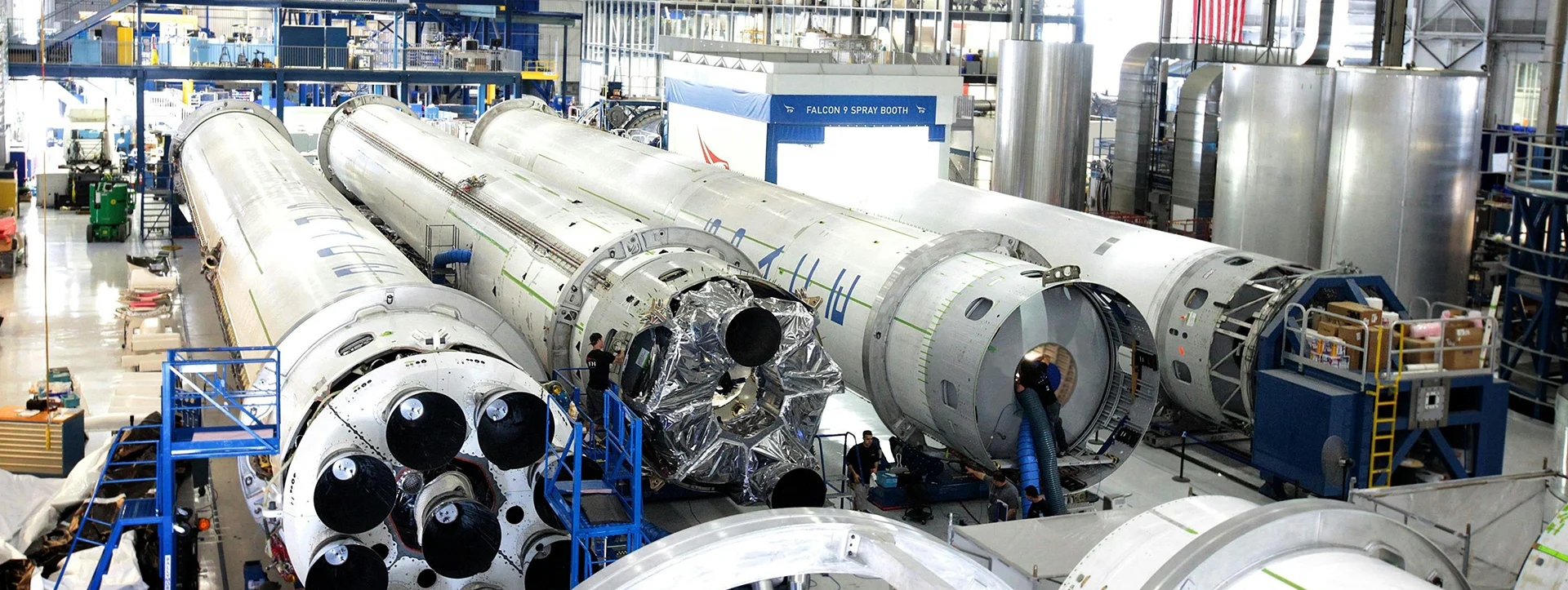
Plastics in aerospace
Plastics play an indispensable role in aerospace due to their combination of lightweight properties, strength, resistance to extreme conditions, and versatility, enhancing the performance and efficiency of spacecraft and satellites.
Key Applications and Benefits of Plastics in Aerospace
Weight Reduction:
- Carbon Fiber Reinforced Polymers (CFRP): These materials are extremely lightweight and strong, making them ideal for structural components of spacecraft. By using CFRP, the weight of aerospace structures can be reduced, resulting in higher fuel efficiency and improved performance.
- Glass Fiber Reinforced Polymers (GFRP): Also lightweight and strong, GFRP is used for non-structural components such as panels and coverings.
Strength and Stiffness:
- Plastic Matrix Composites: Composites like CFRP and GFRP offer high strength and stiffness, essential for creating strong yet lightweight components capable of withstanding the extreme conditions of space.
Heat and Fire Resistance:
- Heat Shield Materials: Plastics like silicon oxide and ceramic composites are used in heat shields to protect spacecraft from the extreme temperatures during atmospheric re-entry. These materials can withstand temperatures of thousands of degrees Celsius without degrading.
- Thermosetting Plastics: Materials like polyimides and other heat-resistant plastics are used in components exposed to high temperatures, such as engines and electronic equipment.
Thermal Insulation:
- Thermal Insulation Materials: Plastics such as polyurethane and aerogels are used as insulation materials in spacecraft and satellites to minimize heat loss and regulate temperature variations. This is critical for maintaining the functionality of electronic systems and the internal environment of spacecraft.
Electrical Insulation:
- Polyimides and Other High-Performance Plastics: These plastics are used to insulate electrical wiring and components. Reliable electrical insulation and protection against radiation are crucial for the operation of electronic systems and instruments in aerospace.
Chemical Resistance:
- Chemical-Resistant Materials: Plastics such as fluoropolymers are resistant to aggressive chemicals and radiation, preserving the integrity and performance of aerospace components exposed to the harsh environment of space and chemical substances.
Design and Manufacturing Capabilities:
- Complex Shapes and Precision: Plastics can be molded into complex shapes and precisely machined, enabling aerospace engineers to design and produce advanced, customized components. This includes everything from structural parts to internal linings and insulation materials.
Examples of Applications
- Satellites: Plastics are used in satellites for both structural and insulating purposes. Satellites employ CFRP and other composites for structural components and polyimide coatings for protection against the space environment.
- Space Probes: Space probes use plastics for insulation and protection of their scientific instruments and electronics.
- Space Stations: Interiors of space stations, such as the International Space Station (ISS), use plastics for their low weight, durability, and adaptability in the controlled, enclosed environment of the station.
Benefits of Plastics in Aerospace
- Lightweight: Reduces the overall mass of spacecraft, which is essential for fuel savings and launch cost efficiency.
- Durability: Withstands extreme temperatures, radiation, and chemical exposure, ensuring reliability and longevity of aerospace components.
- Cost Savings: Plastics are often more cost-effective than metals and can contribute to lower manufacturing and operational expenses.
Curious about the plastics Profplastic supplies to the aerospace industry? Contact us today!
